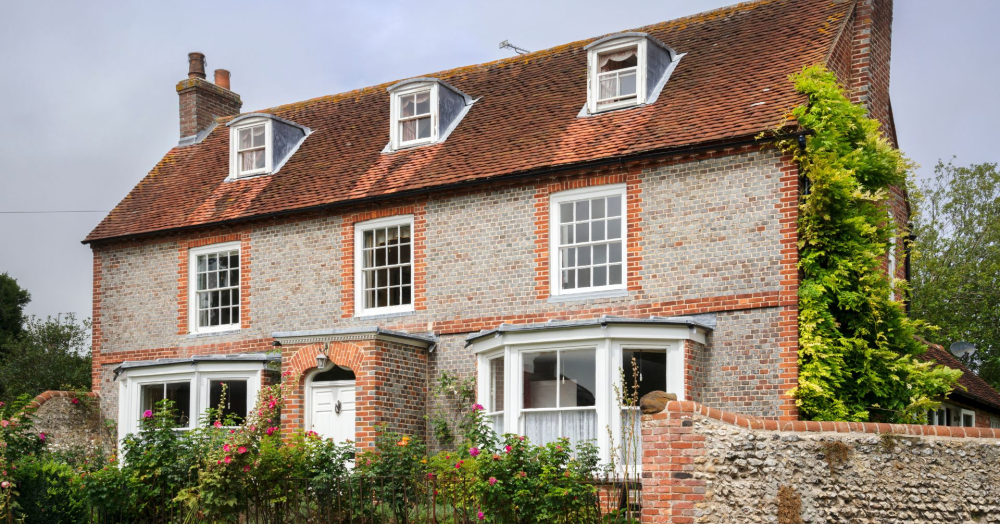Rich in history and ranging from country cottages to historic manor houses, listed properties are some of Britain's most coveted homes. However, the buying process for a listed building can be a little more comprehensive than that of your average home. This guide outlines all you need to know before purchasing a listed property.
What is a listed building?
Listing celebrates a building's architectural and historic interest, and means it is protected under the consideration of the planning system so that it can be retained for future generations. This means that the building is protected from certain alterations that may impact the character of the property and/or its historical importance.
Generally, the classification protects the entire building along with any structures attached to the building. It can also include outbuildings, garden walls and even garden statues, but not always. Here is an outline of the classifications granted to listed buildings:
- Grade I Listed: buildings of exceptional interest.
- Grade II* Listed: buildings of particular importance.
- Grade II Listed: buildings of special architectural or historic interest.
The benefits of purchasing a listed property
You own a slice of history
Owning a listed building can be a huge accomplishment. Owning a building that is cemented in history is valued by many and can provide a sense of character and charm that modern-day homes simply cannot.
A unique lifestyle
Listed buildings are often situated in fantastic, often sought-after locations, and provide a lifestyle many listed property owners identify with. For example, living in a chocolate box cottage, Georgian manor or traditional farmhouse can offer a unique lifestyle tailored to the style of home and location it is based.
Property value
Listed buildings are oftentimes valued higher than other properties in the same location. The supply of listed properties is limited and therefore in high demand, which not only means they make for a fantastic long-term investment but should you come to sell, you are in favour of negotiating higher price points.
Buying a listed property
Find out the reason for listing
It is important to educate yourself on exactly why the property is listed in the first place. The
National Heritage List for England offers information on this and will give you an idea of the features within the home that you may face restrictions on should you want to make changes.
Instruct a surveyor
Make sure you enlist a surveyor who has specialist experience in listed buildings. This way they will have a good idea of how the property is constructed along with insight relating to any specific repairs. This will help manage your expectations should you come to own the property.
Restrictions on improvements
As the property is protected under its listing, you may face restrictions when it comes to making changes to the home, both inside and out. If you are planning to renovate, you will need the advice of an expert beforehand.
In some cases these restrictions can extend to external structures and gardens but you will need to check with your planning authority as all buildings differ. As a guideline, any features that are specifically mentioned in the home's official listing documents cannot be altered.
It is important that you know that if the previous owners have carried out improvements to the property, that they were appropriately authorised to do so. Once the sale is complete, you will become liable for these improvements and you will need to make sure you have sufficient insurance to cover this.
Gaining consent for alterations
Although there are more restrictions with listed properties than your average home, you can still make improvements to a listed property. In order to do this, you will need to gain consent from your local conservation officer. This can be a lengthy process depending on what the alterations actually are, but it is vital that you speak to the local conservation officer beforehand. The conservation officer will be able to advise you throughout the process, however, a pre-application consultation is important if you want to make sure that these improvements are more likely to be approved.
Maintenance costs
Repairs on listed buildings are often more expensive due to the need for specialist tradesmen. The cost of any repairs mostly depends on how the previous owners have cared for the property, but it is important to stay on top of maintenance to prevent long-term issues. Water and damp can often cause issues in listed properties, so ensure you get specialist advice on this.
Home insurance
It is important that you select the right home insurance that covers all your requirements. Unlike non-listed properties, if the home was to incur accidental damages, your local conservation officer, and in some instances English Heritage, would also be involved in the process to ensure the property is suitably restored. Make sure you have insurance in place that will cover the full cost of repairing your property.
